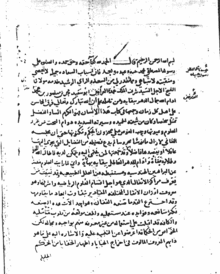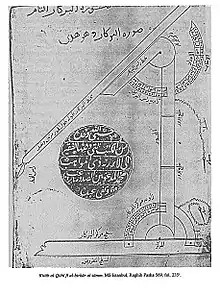Al-Isfizari
Abū Ḥātim al-Muẓaffar al-Isfazārī (fl. late 11th – early 12th century CE) was a Persian Muslim mathematician from Khurasan. According to Ibn al-Athir and Qutb al-Din al-Shirazi, he worked in the Seljuq observatory of Isfahan. Nezami Aruzi met him in Balkh in (in present‐day Afghanistan) in 1112 or 1113.[1]

He was a contemporary of Umar al-Khayyam and Abd al-Raḥmān al-Khāzinī. He main work is entitled Irshād dhawī al-cirfān ilā ṣinācat al-qaffān (Guiding the possessors of learning in the art of the steelyard), a relatively long text on the theory of the steelyard balance with unequal arms. His other surviving works include a summary of Euclid's Elements, a text on geometrical measurements, and a treatise on meteorology in Persian language.
Al-Isfazārī's corpus of mechanics is composed of two sets of texts, which have been published in Matn al-Muẓaffar al-Isfazārī fī cilmay al-aṯqāl wa’l-ḥiyal by the Al-Furqan Islamic Heritage Foundation.
References
- Abattouy, Mohammed. "Isfizari". islamsci.mcgill.ca. Retrieved 6 March 2017.
- Al-Isfizari – Muslim Heritage
| Authority control |
|---|
| Mathematicians |
|  | ||||||||||||||||
|---|---|---|---|---|---|---|---|---|---|---|---|---|---|---|---|---|---|---|
| Mathematical works | ||||||||||||||||||
| Concepts | ||||||||||||||||||
| Centers | ||||||||||||||||||
| Influences | ||||||||||||||||||
| Influenced | ||||||||||||||||||
| |||||||||||||||||||||||||||
| |||||||||||||||||||||||||||
People of Khorasan | |
|---|---|
| Scientists | |
| Philosophers | |
| Islamic scholars |
|
| Poets and artists | |
| Historians and political figures |
|
